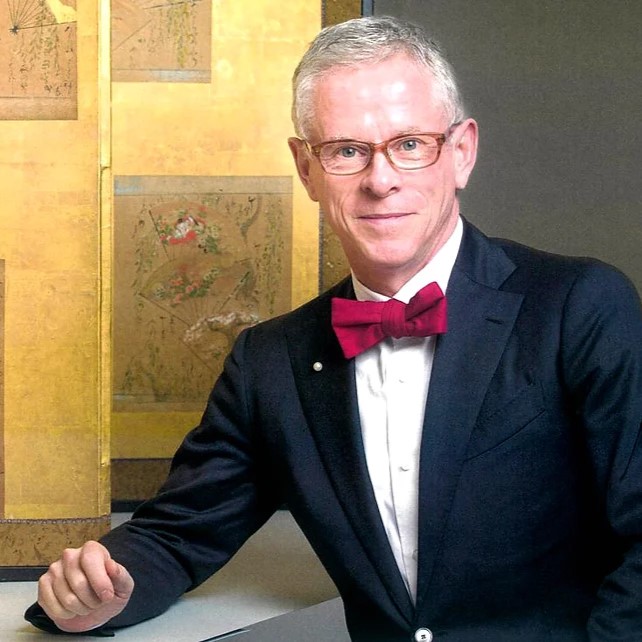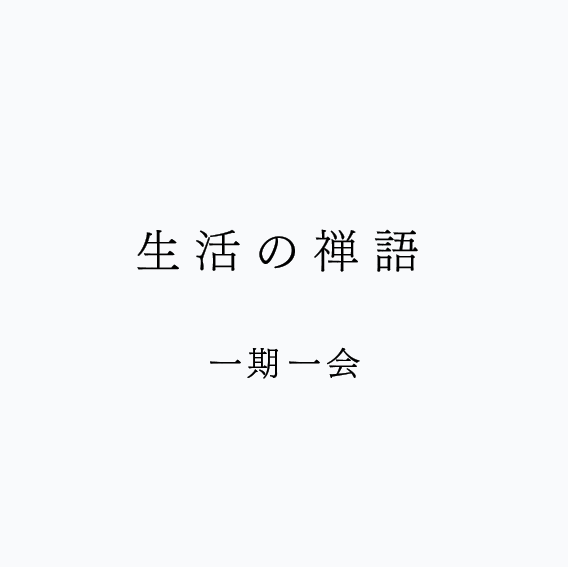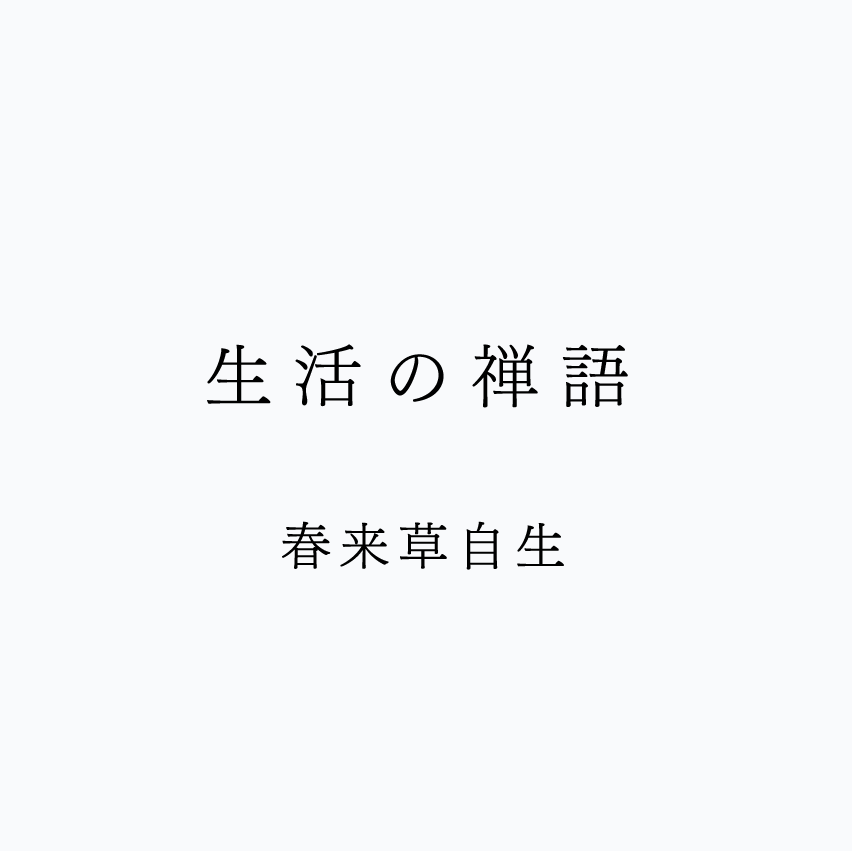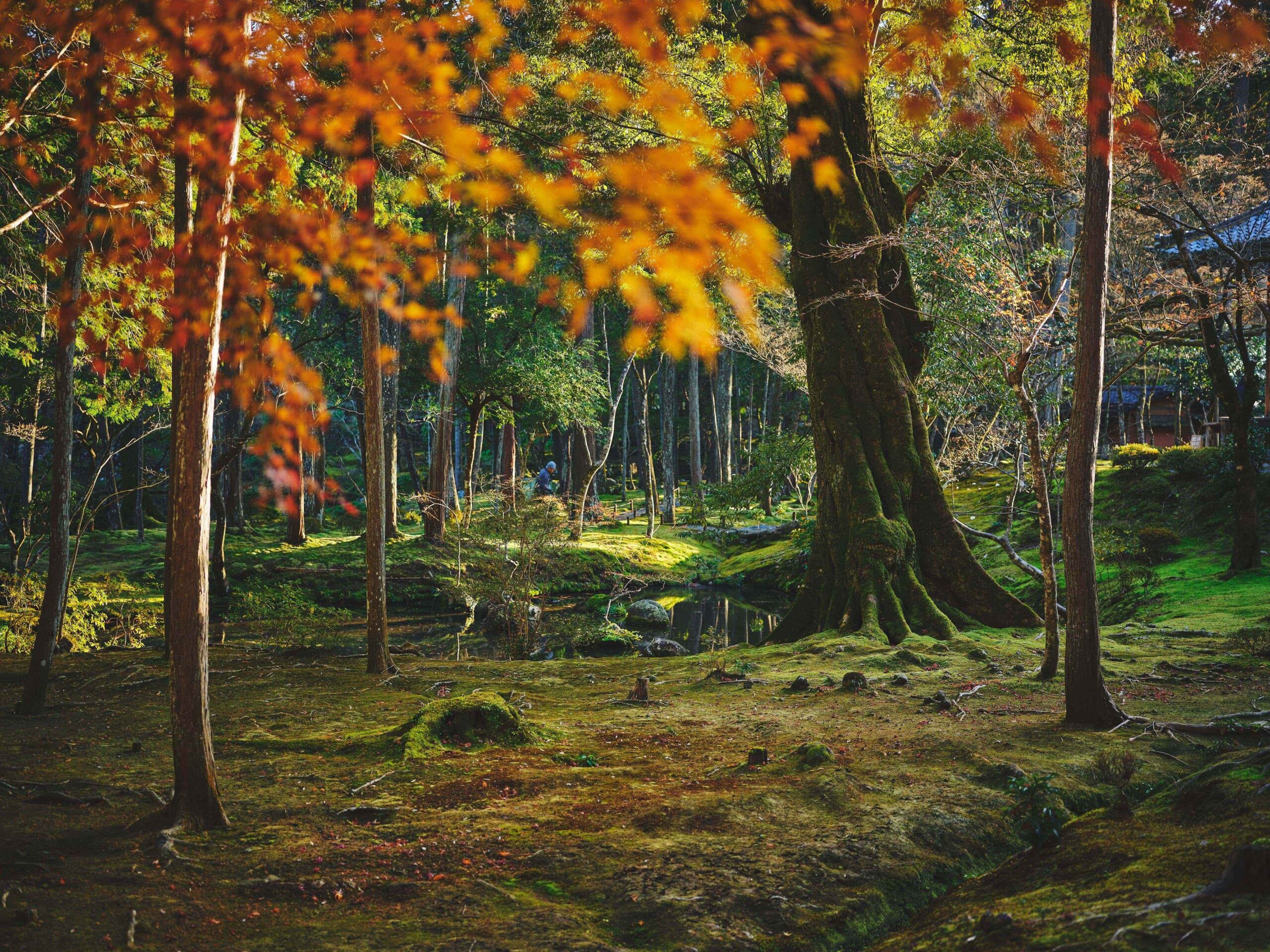2024.11.20
体露金風 西芳寺 第七景
ピーター・J・マクミラン
(翻訳家・詩人)
翻訳者であり詩人でもあるピーター・マクミラン氏が、西芳寺の魅力を綴る「体露金風 西芳寺」シリーズ。日本文化への造詣が深いピーター氏の感性と深い洞察が誘う、心の旅。ぜひ原文の美しい響きも、ご堪能ください。
心の瞳で、西芳寺を見る
すでに、今月の西芳寺のエッセイの執筆は期限を過ぎています。しかし、まだ筆を握れていません。今、やっと取り組み始めましたが、どれほど書けることやら。いつもは、西芳寺を訪れた時のことをもとに執筆しているのですが、今月は訪問の日程を組めませんでした。何も書けない。そんな状況に陥っています。
西芳寺を訪れるときはいつも、大切な人に誓いを立てるかのような気持ちになります。西芳寺は、私の精神性をはかるバロメーター。ここに足を運ぶと、竹や葦の節のように、どこまで精神的な旅を深められたかが刻まれます。私の弱さや至らなさに目を向ける余裕と、それらを乗り越える道すじを、苔の静けさのなかで教えてくれるのです。
お庭の新鮮なイメージを持たぬままエッセイを書くのは、今回がはじめてです。つまり私は、その場でお庭を見るのではなく、心の瞳を通してお庭を見なければいけません。しかし対象そのものを見るのではなく、心の瞳を通して見るというのは、日本文化の真髄です。ドナルド・キーン氏が『徒然草』をみごとに英訳した書籍『Essays in Idleness』には、次のような文章が載っています。
Are we to look at cherry blossoms only in full bloom, the moon only when it is cloudless? To long for the moon while looking on the rain, to lower the blinds and be unaware of the passing of the spring — these are even more deeply moving.
これは、月を直接見る代わりに、部屋の中から月を想像してみようと、同作品内で述べた吉田兼好の言葉です。
原文:花はさかりに、月はくまなきをのみ、見るものかは。雨に向かいて月を恋い、垂れこめて春の行方を知らぬも、猶なおあはれに、なさけ深し。
現代語訳:桜は満開のときだけを、月は陰りのないときだけを、見るものだろうか。雨のなか、月を恋しく想うのも、すだれを垂らし春の終わりを見過ごしても、趣深いものだ。
兼好の案は極端でありながら、ユーモアも感じさせるもの。花を眺める必要は一切なく、春のあいだは家の中で過ごしていてもいいのだと述べています。

さて、西芳寺の話に戻りましょう。私の心には、映画のシーンのように、さまざまなイメージが浮かび上がっています。お庭で坐禅を組むときに、藤田執事長が鳴らしてくれる鐘の音を思い出します。初めて西芳寺を訪れたときのことも、はっきりと思い出します。観光庁のプロジェクトで翻訳に携わったときのことも、そして西芳寺に連れてきた友人たちのリアクションも思い出します。ある友人が西芳寺を訪れたのは、枝垂桜が満開の頃でした。彼が、風に揺れる花々の前に立っている様子が思い浮かびます。
そして、お庭で庭師と話すときのことも思い出します。今、私は心の瞳を通して、庭師の方と歩きながらお庭を巡っています。お庭に行くと、いつも初めはひとりきりで、孤独を感じており、空っぽの自分がお庭の鏡に映っているようです。ですが庭師の方々に話しかけてみると、今までとは違った角度で、お庭を見られるようになります。庭師の仕事は、お庭のお世話をし、植物を育て、雑草の手入れをし、清らかにすること。そういった業務に携わっていくなかで、庭師の方々は心を澄ませてゆくのでしょう。苔、木々の葉、そしてそよ風の音や、鳥の鳴き声に耳を傾けながら、庭師の方々はやるべきことを見極めます。そうして、西芳寺を常に緑で、より安らかな場所にしているのです。彼らの仕事を眺めていると、心がおだやかになります。
そして、ふと気付きました。今月は足を運べなかったといえども、読者の皆さんもそうであるように、心の瞳を通して、いつでも西芳寺を訪問できるじゃないかと。心の瞳から見るお庭の青さは、どんな色調にもなり得ます。もしくは、より色濃く思い起こされるかもしれません。さて、そんな発見に心を躍らせながら、筆を置くとしましょう。
Seeing Saihoji in the Eye of the Heart
The deadline for this month’s Saihoji essay has already passed, but I have not yet taken up my pen. I begin now and see how far I get with it. I have always based each essay on a visit to the temple, but last month I was not able to arrange a visit, so I have a kind of writer’s block.
When I go to Saihoji each time, I feel like a man renewing his vows to a beloved, as Saihoji has become a kind of spiritual barometer to me. Each visit is like the joint (fushi) on a bamboo or on a piece of reed grass (ashi) and helps me record the limitations of my spiritual journey. It gives me the space to address my own failings and shortcomings and to look for ways to overcome them in a green moss silence.
This is the first time to write an essay about Saihoji without a fresh image of the garden in my mind. It means that instead of looking at the garden directly, I must look at it with the eye of my heart. But the idea of looking at things with the eye of the heart instead of the real thing is at the very heart of Japanese culture. In Essays in Idleness —the beautiful English translation of Yoshida Kenko's Tsurezuregusa by Donald Keene, —Kenko writes that instead of looking at the moon, let’s imagine it from our room:
Are we to look at cherry blossoms only in full bloom, the moon only when it is cloudless? To long for the moon while looking on the rain, to lower the blinds and be unaware of the passing of the spring — these are even more deeply moving.
Kenko even makes the radical and somewhat humorous suggestion that we do not need to see the blossoms at all and can stay indoors for the whole of the spring.
So now let me return to Saihoji. I can see many images floating like scenes from a movie in my heart. I recall Mr. Fujita ringing a bell to start the meditation in the garden for me. I recall the first visits there so clearly. I recall the time when I helped to create translations for the Ministry of Culture projects, and I recall some of the guests that I brought to the garden and their reactions. One friend came when the shidare cherry blossom was in full bloom, and I can see him now standing in front of the waving blossoms.
And I recall talking to the gardeners in the garden. I am walking around the garden now with a gardener in the eye of my heart. When I go to the garden, I always at first feel a sense of solitude and loneliness, in the empty mirror of myself. But when I talk to the gardeners, I can see the garden in new ways. Their work is caring for the garden, growing, healing weeding, cleaning, and all these activities cleanse their hearts. Listening to the sounds of the moss and leaves, breezes and birdsong they follow their directions for keeping Saihoji evergreen, ever safe. Watching them at work makes me feel peaceful.
And then suddenly I realize that though I could not go to the garden this month, I know now that— just as you can too— I can visit it anytime in the eye of my heart. And in the eye of the heart, it can be any shade of green or even greener still. And in the joy of that discovery, I lay down my pen.
Peter MacMillan ピーター・J・マクミラン
翻訳家・詩人。株式会社 月の舟(制作・翻訳会社) 代表取締役。
2008年に英訳『百人一首』を出版し、日米で翻訳賞を受賞。2016年9月には英訳『The Tales of Ise』(伊勢物語)、2017年には英訳『One Hundred Poets One Poem Each(新訳)』の2冊がPenguin Booksより出版される。近著に『日本の古典を英語で読む』『英語で味わう万葉集』など著書多数。2019年より朝日新聞にて「星の林に」、2022年より京都新聞にて「不思議の国の和歌ワンダーランド 英語で読む百人一首」を連載。

翻訳:福田安奈






